
Browse our fun-packed, helpful plant-based articles, and delve deeper into this healthy, sustainable lifestyle!


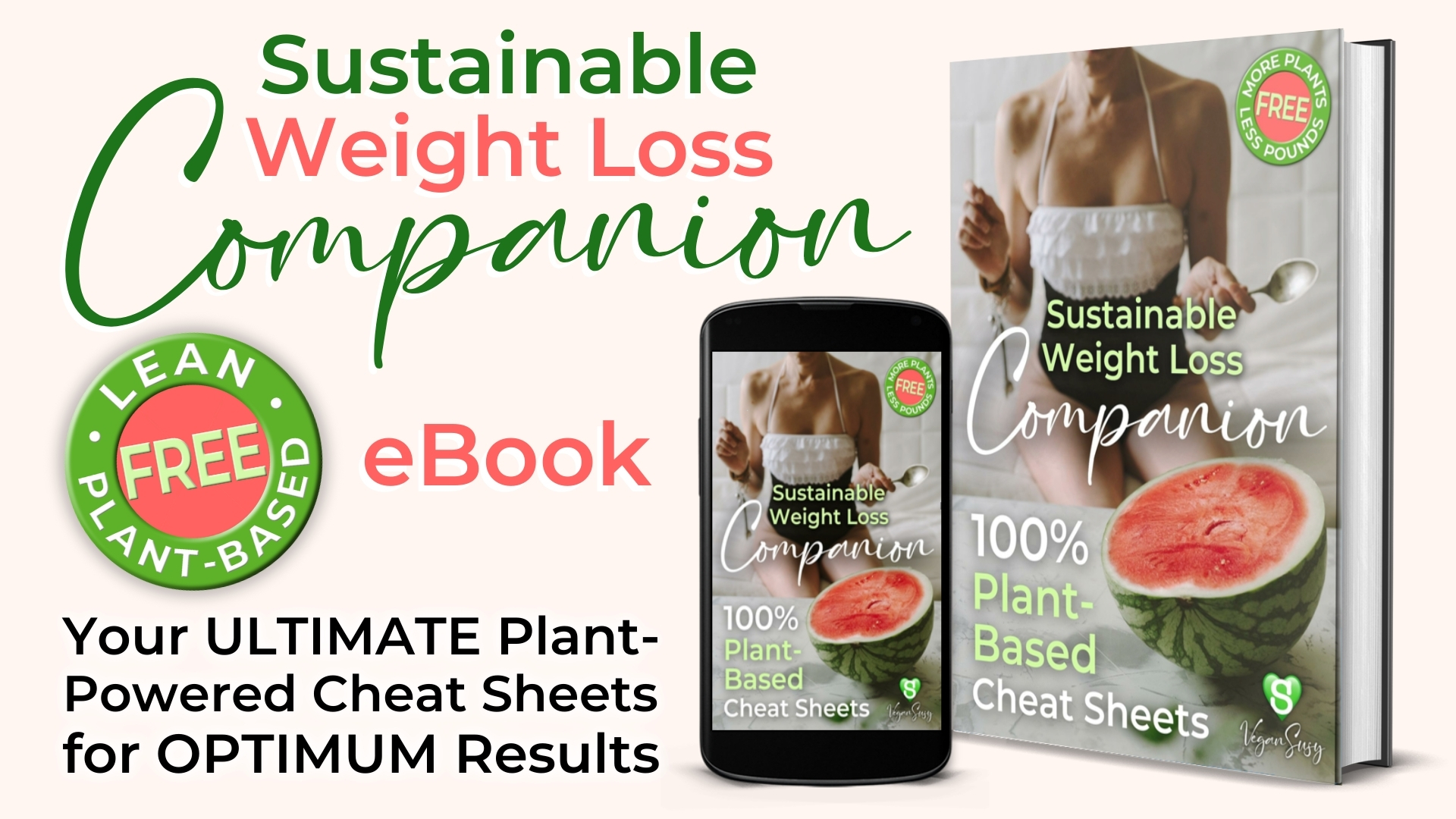

6 High-Protein Microgreens That You Can Easily Grow Indoors
Plant-Based Lifestyle Tips For Women
Author: Plant-Based Susy
We will show you how easy it is to grow your own protein-packed microgreens at home
Most people don’t realise that some microgreens contain 40% more nutrients than the adult plants. Even fewer people know that you can grow them yourself in as little as 14 days. There are several high-protein vegan microgreens to grow indoors that can thrive on any sunny windowsill. You don’t need green fingers to be able to grow your own delicious, crisp, protein-packed food.
Microgreens are a high-protein vegan ingredient that can be grown indoors with very little equipment. Although all microgreens contain protein, radishes, and sunflowers contain the highest amounts of the macronutrient. Other high-protein microgreens include peas, buckwheat, red clover, and amaranth.
Switching to a vegan diet isn’t only about reaping the multiple health benefits. It’s about becoming more connected with the food that nourishes our bodies. We will show you how easy it is to grow your own protein-packed microgreens at home — it may even become a rewarding new hobby!
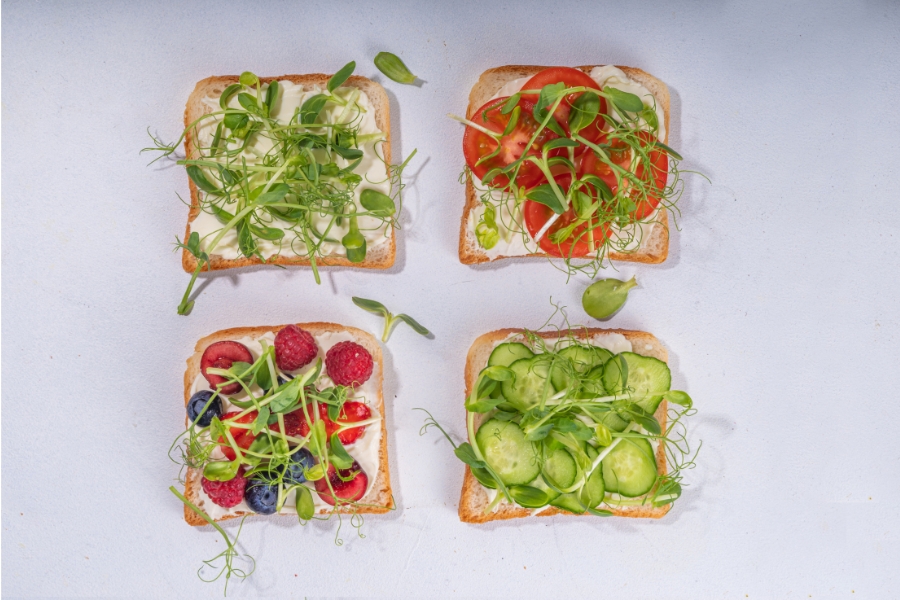
Table of Contents:
What Is the Difference Between Sprouts and Microgreens?
While both are easy to produce and extremely healthy, microgreens differ from sprouts in the following ways:
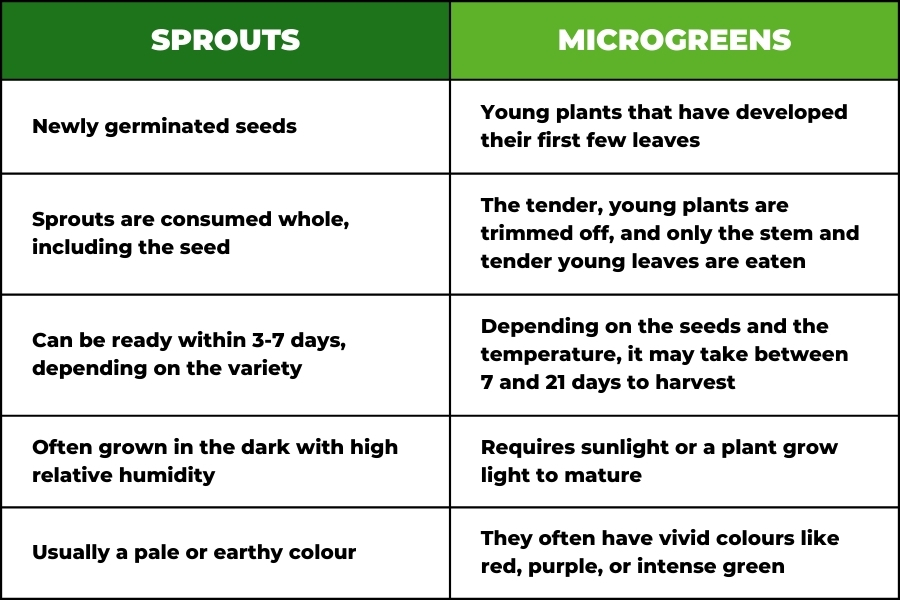
Microgreens are essentially the mini-me of commonly consumed plants like cabbage, broccoli, radishes, kale, and amaranth. They can also include herbs like thyme, basil, or oregano, as well as seeds like sunflower.
How to Grow Your Own Microgreens Indoors
It is entirely possible to produce nutrient-dense microgreens for year-round protein even if you don’t have a garden or balcony. All you need is a sunny window, and you will be able to amp up the status of every meal by adding crisp, garden-fresh microgreens that are naturally loaded with goodness.
What we absolutely love about growing microgreens is that everyone can do it. Like most hobbies, there are various levels to this endeavour. If you are only experimenting, it is perfectly acceptable to start using basic equipment that you already have or even recycling suitable containers.
Not only do we have great plant-based recipes, but here at Vegan Susy, we also show you how to grow your own ingredients!
Here’s what you’ll need:
A growing tray: Any suitably sized tray that can hold a growing medium.
A lid or tray cover: Anything that can cover the tray during the early stage of germination to block out light. Most microgreens need to be kept in complete darkness for the first few days.
A growing medium: You have a choice here. Some growers love the convenience of natural jute, hemp, or cotton mats, while others enjoy using clean, organic potting soil.
Microgreen seeds of your choice
A spray bottle
A small cup to soak the seeds prior to planting
A sunny window
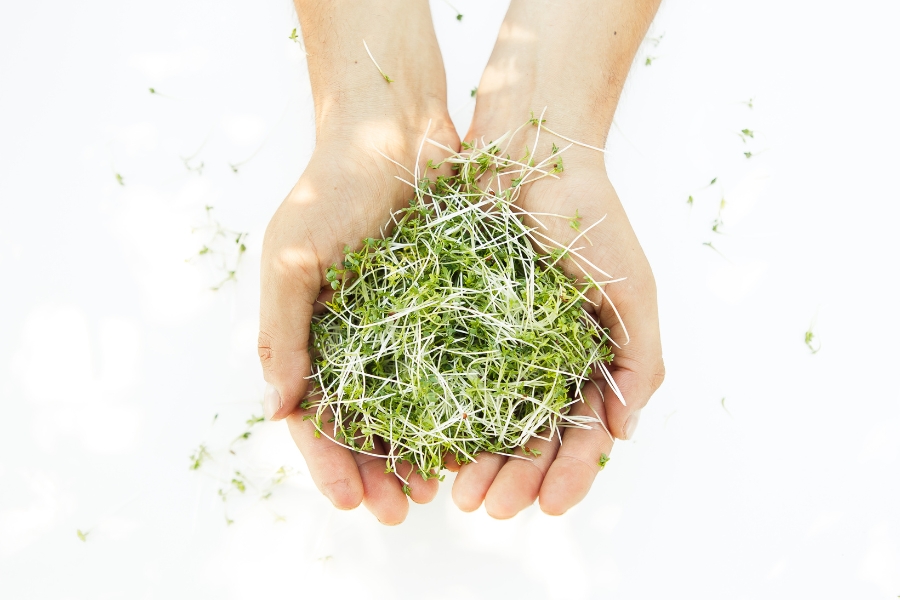
Method:
This method is general, so always be sure to check the specific instructions for the seeds you have selected.
Soak the seeds for 6-8 hours in clean, room-temperature water.
Soak the growing medium and place it in the tray, container, or dish you are using.
Gently spread the seeds out evenly over the surface of the growing medium. (there is no need to cover them if you are using soil)
Cover the container so that moisture stays inside.
Place it near a window until the seeds sprout, which can take 2-3 days.
Remove the lid and ensure that the tray is in a position where it will receive at least 4 hours of sunlight per day.
Water the microgreens daily to ensure that the growing medium never dries out.
Your nutrient-rich, delicious microgreens are ready to harvest when the first two real leaves develop.
Harvest by snipping the required amount of microgreens just above the soil. You only need to harvest the amount you need and leave the rest to grow for a few more days.
If you would prefer to use an all-in-one microgreen starter kit rather than going it alone, they are available at selected outlets. That’s all there is to it!
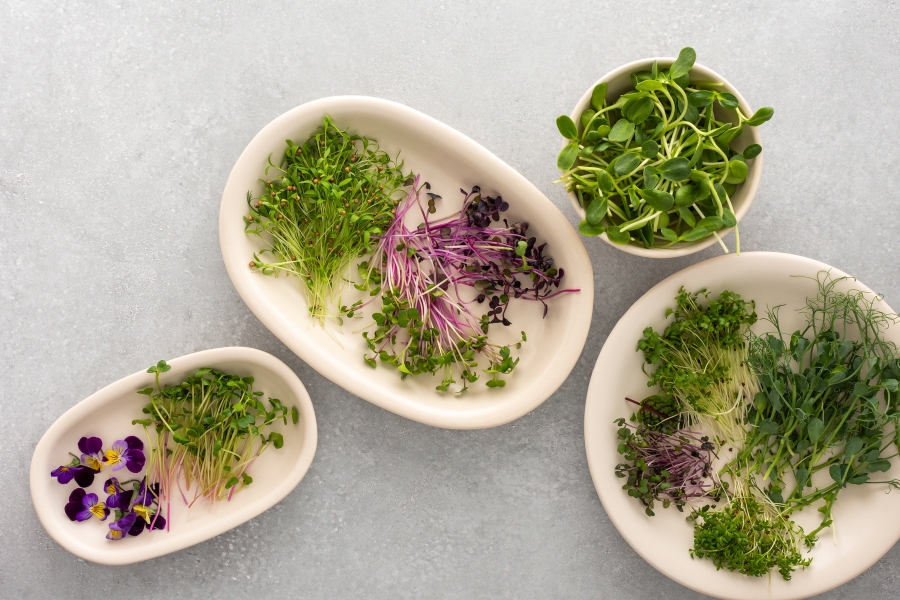
6 High Protein Vegan Microgreens To Grow Indoors
Protein is a vital macronutrient needed for repairing and building muscles. It is especially important during menopause as women in this transition phase require more protein than before in order to counter muscle loss.
One of the most exciting parts of growing any food is deciding what to plant! Although all microgreens contain protein in varying amounts, if you want your home harvest to pack an extra protein punch, try growing one of these superfoods:
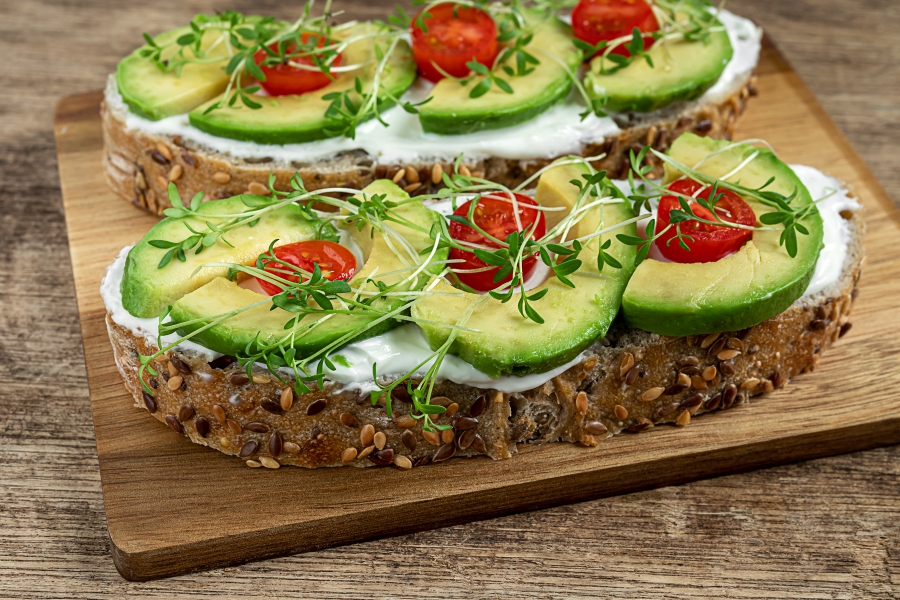
1. Sunflower
Sunflower microgreens contain an impressive 20% protein. They probably aren’t the first thing to come to mind when you think about growing edible plants. After all, we usually only consume the seeds of the mature sunflowers.
Immature sunflower plants grown in the form of microgreens are super tasty and have a mild, nutty flavour. They make a great addition to everything from salads to sandwiches.
In addition to containing several vitamins, including vitamins A and E, they also contain good amounts of iron, calcium, and phosphorus.
TOP TIP: After laying the sunflower seed on the growing medium, place something heavy directly against the surface of the seeds to keep the seed in contact with the soil. This also helps the seed hull to detach from the cotyledons as they grow.
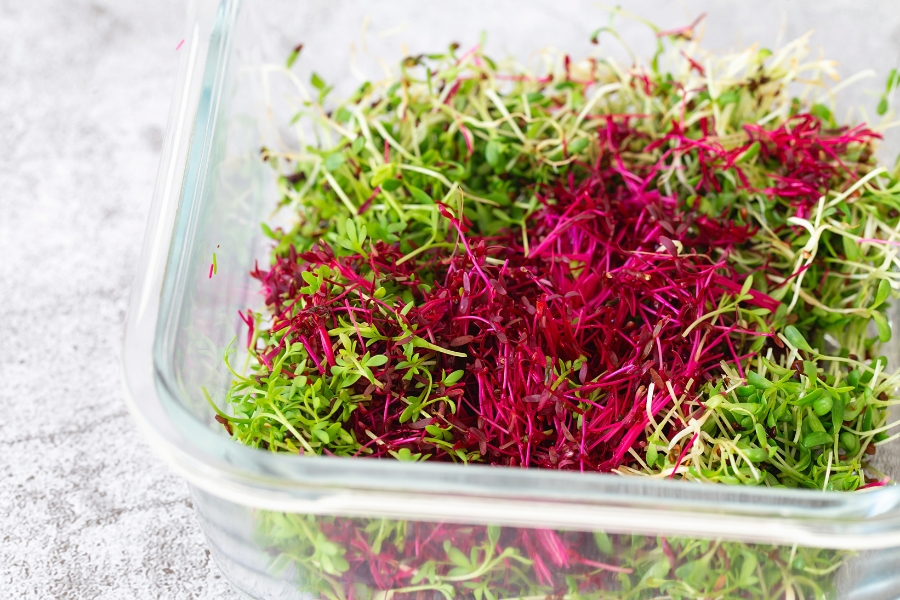
2. Amaranth
Amaranth is a fast-growing, super nutritious microgreen that will not only supercharge your salads but also adds a delightful touch of colour to dishes. The vibrant shades of this superfood include various shades of green, red, and purple.
The overall taste profile of amaranth microgreens can be described as earthy and pleasant. It is used in a variety of dishes and packs a whopping 16% protein in addition to lysine, thiamine, niacin, calcium, and iron. It is also an excellent source of folate and Vitamins A and C.
Amaranth is one of the fastest-growing microgreens and is perfect for impatient beginners who want quick results. The tiny super seeds germinate in 2-3 days and, under ideal conditions, can be ready to harvest in 10 days.
TOP TIP: There is no need to soak amaranth seeds. Just sprinkle them onto the moist growing medium and cover until they have germinated. Mist daily to prevent the seeds from drying out.
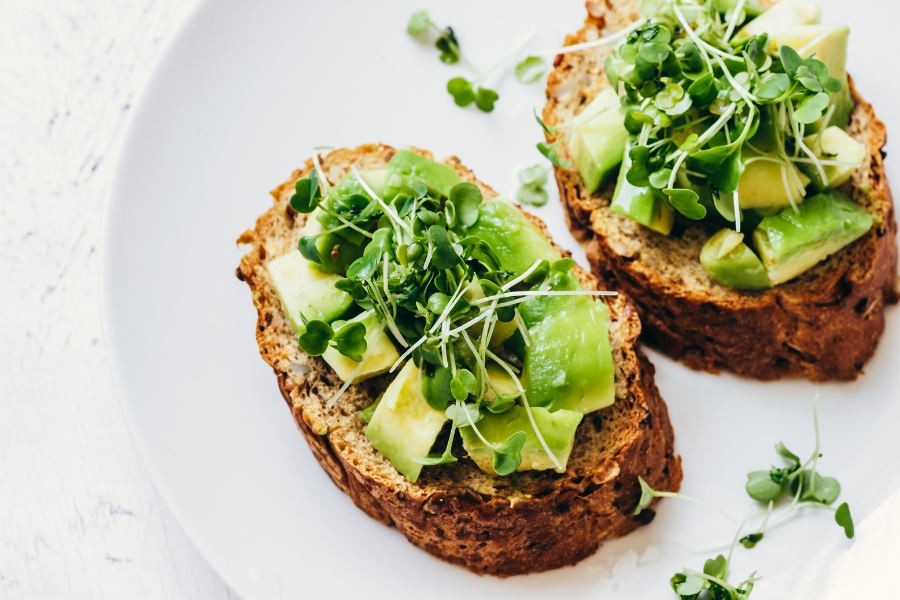
3. Buckwheat
Despite being called buckwheat, these seeds contain no wheat or gluten. Buckwheat seeds produce large, leafy, green microgreens that have a mild, citrusy flavour.
Buckwheat microgreens are ideal to use as salad greens, in place of lettuce on sandwiches, as a filling in wraps, or to blend into healthy, nutrient-rich smoothies.
While the protein content is a little lower than some other microgreens, buckwheat has a secret superpower – it contains all eight essential amino acids, which makes it one of the most complete vegetable proteins available.
TOP TIP: Soaking buckwheat seeds for 12-24 hours in a bowl before laying them on the growing medium will speed up the germination process.
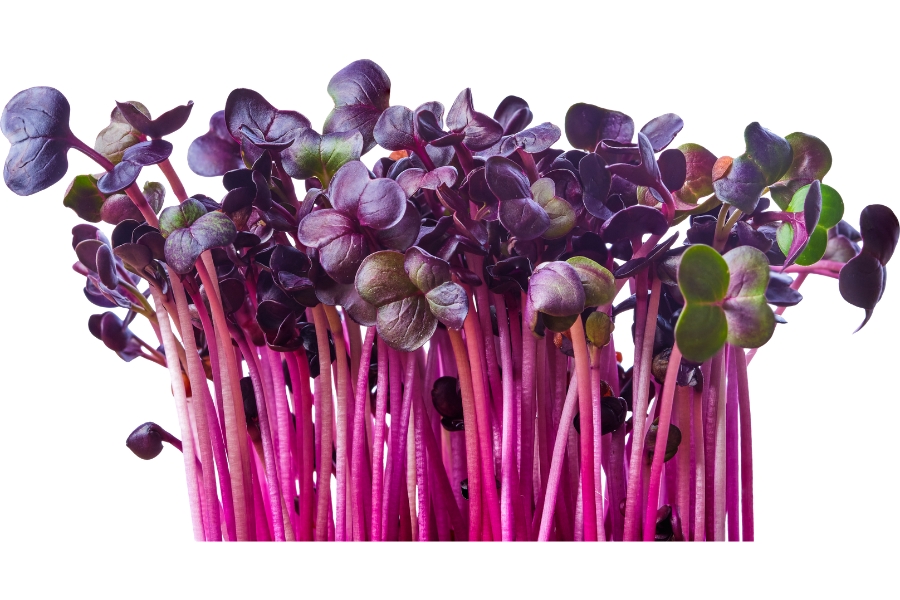
4. Radish
Radish microgreens are another beginner-friendly variety that is a protein powerhouse! Boasting an impressive 30% protein content, the young plants also add colour, crunchy texture, and a delightfully spicy flavour to food.
Growing radish microgreens is quick and easy. There is no need to pre-soak the seeds, and in the right conditions, radishes will germinate in 2-3 days.
Be sure to cover the seeds for the first few days, as they should be kept in total darkness during the germination process.
TOP TIP: Radish microgreens add a delightful, mildly spicy flavour and extra crunch to Mexican dishes.
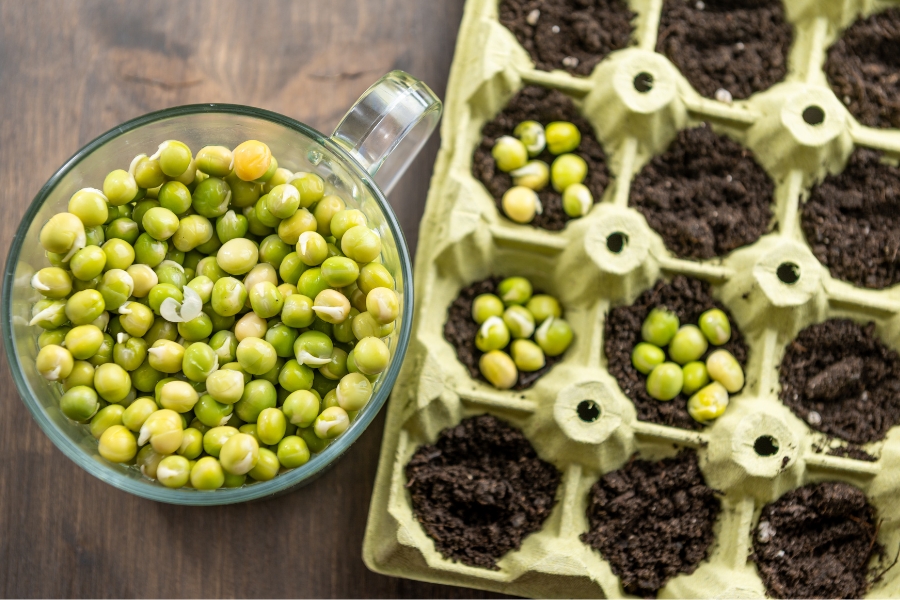
5. Peas
Have you ever eaten freshly picked peas directly from the pod? One can actually taste the natural goodness in the pleasant, fresh taste.
Pea microgreens are the closest thing to fresh pea pods and have a unique nutrient profile that is hard to beat.
Pea microgreens contain:
17% protein
7 times more vitamin C than blueberries
8 times more folic acid than bean sprouts
In addition to being delicious, pea microgreen shoots also contain a significant amount of anti-inflammatory and cancer-fighting nutrients.
Like sunflower seeds, peas are relatively large seeds that benefit from being weighted down during the 4-5-day-long germination stage. This helps to keep them in contact with the growing surface.
After germination, pea microgreens require 10-14 days of growing time to be ready for harvest. They may not be the fastest microgreens to produce, but the sweet, natural taste, along with the snappy crunch, is definitely worth the wait.
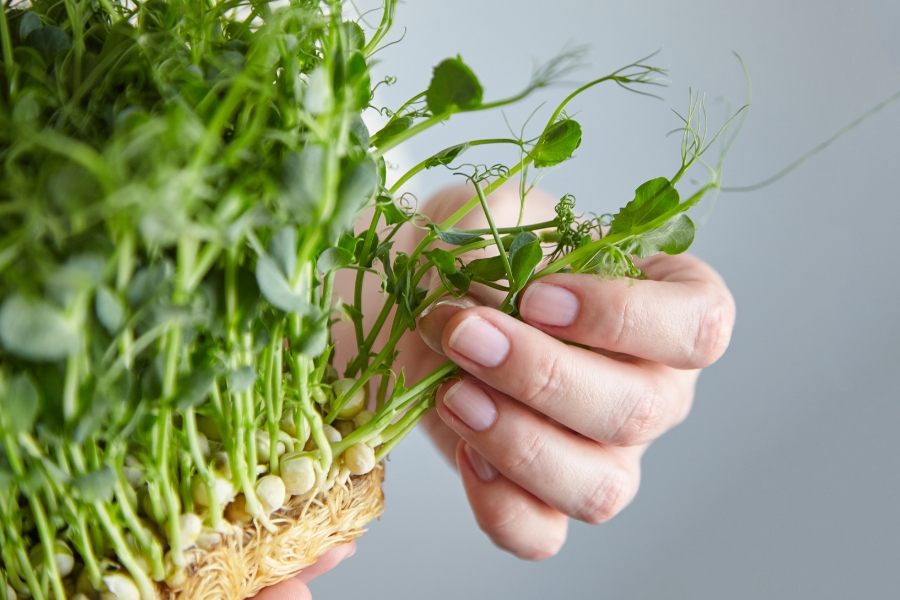
6. Red Clover
Women in menopause should take special note of red clover. Not only is it a high protein microgreen that grows indoors no matter the season, it also contains plant oestrogens (estrogens) similar to the female hormone of the same name.
In addition to being easy to grow and imparting a nutty, mellow taste and a gourmet appeal to dishes, red clover has been found to ease some of the most common symptoms of menopause. This includes the much-dreaded hot flashes!
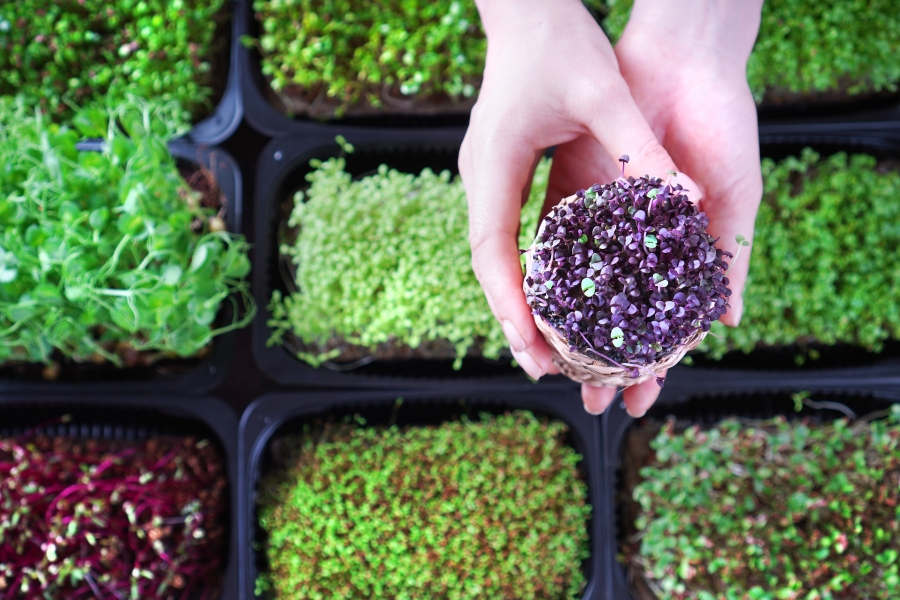
Red clover is a slightly different variety from white clover, but both varieties can be used to grow microgreens. They develop plump, juicy stems and cotyledons with a mild taste that can be added to anything without being overpowering.
TOP TIP: The seeds are tiny, and it is essential to harvest these microgreens early to prevent the plant from maturing as the taste becomes bitter with age. Most sources recommend that the red clover microgreens be harvested before or at around day 10.
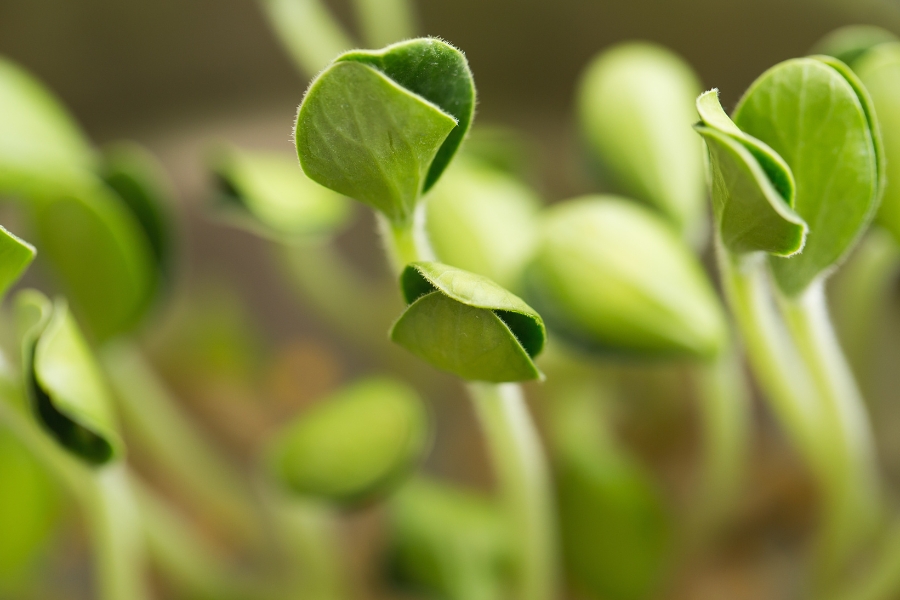
Frequently Asked Questions
Do microgreens regrow after cutting?
No, once the leaves have been harvested, the plant will not regrow. The used growing medium and remaining roots can be composted.
Since most microgreens grow quickly, it is a good idea to stagger the start of batches and have two or more trays growing at the same time.
Which microgreens contain the most protein?
Radish microgreens contain 30% protein. They are also inexpensive and easy to grow.
In addition to protein, they also contain high levels of vitamin C, copper, and folate. They are also high in antioxidants, which facilitate muscle repair.
Buckwheat microgreens are one of the most complete sources of vegetable protein and contain all nine essential amino acids. It is, therefore, a valuable addition to any plant-based diet.
What is the best way to store microgreens?
Store unwashed microgreens in an airtight container in the fridge. Washing them before storing them will cause the delicate stems and leaves to deteriorate faster. If necessary, rinse the microgreens immediately before serving.
Which microgreens are the most protein-packed?
Sunflower, radish, peas, and buckwheat deliver a powerful protein punch for plant-based diets.
Do microgreens need direct sunlight?
Not necessarily! A bright windowsill or a grow light will keep your greens thriving.
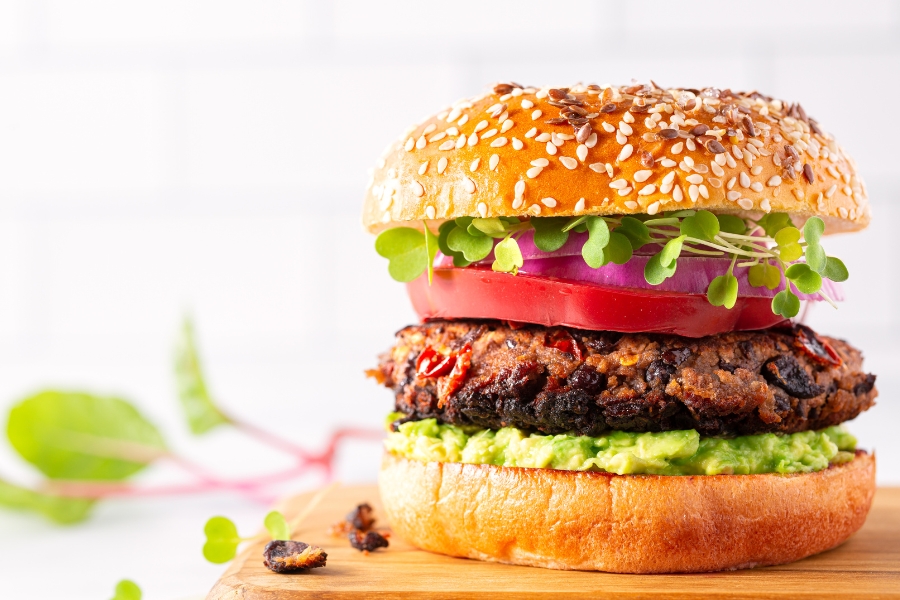
Conclusion:
There are many types of high-protein vegan microgreens to grow at home! Adding a bunch of fresh, crunchy microgreens instantly elevates any meal or snack. Microgreens are fast-growing, easy to care for, and nutrient-dense. Growing your own nutritious food is an extremely rewarding feeling, and once you start, you may find yourself hooked!
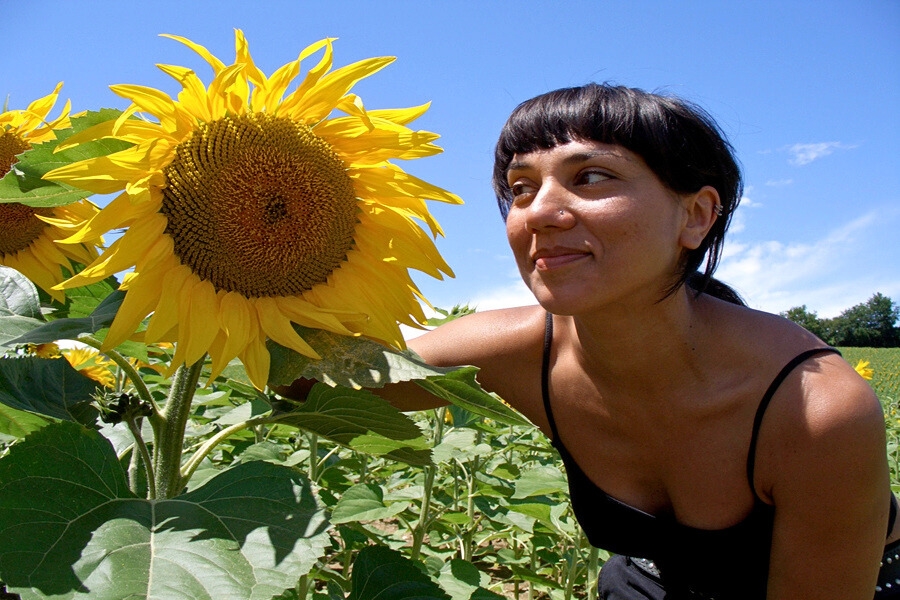
💚 "Happy Plant-Based Eating & Exercising!" 💚

Plant-Based Susy
Plant-Based Nutrition Professional & Weight Loss Coach
Empower Yourself: Embark on a Delicious Fat Loss Adventure

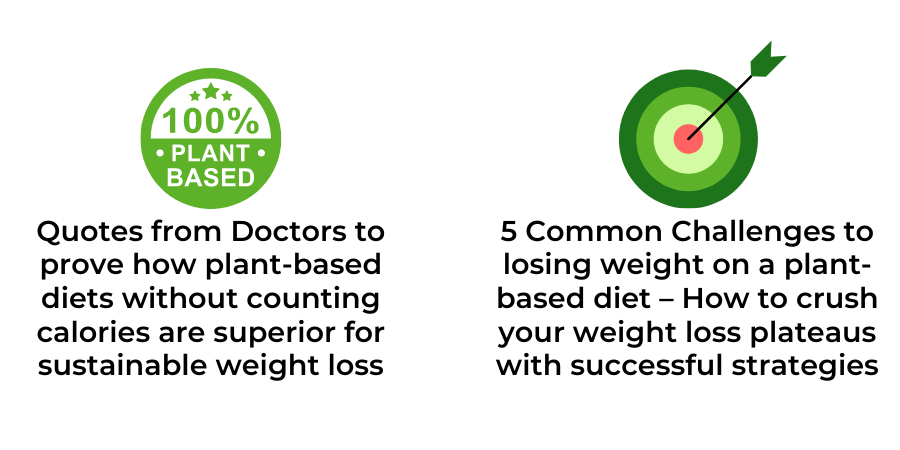
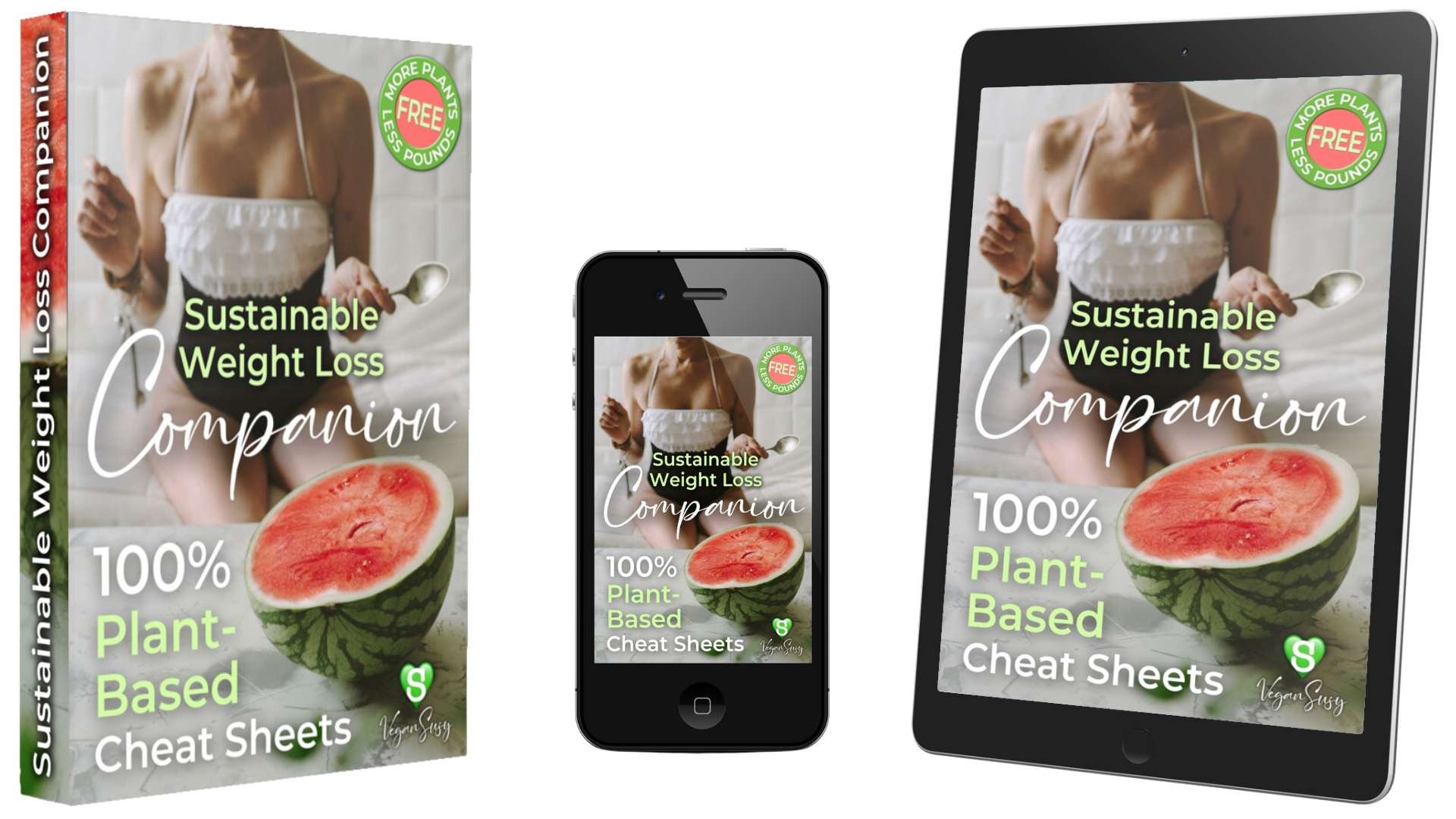
🍉 Get Ready to Jump Start Your Fitness Goals AND DISCOVER A HEALTHIER YOU!
🍉 Let's Make Your Fat Loss & Optimum Health Journey a Delicious Success Story!
🍉 Get The FREE Sustainable Weight Loss Companion eBook and CHEAT SHEETS!
More Free Resources
Unlock Your Transformation Today!
© 2025 VeganSusy Ltd. All Rights Reserved


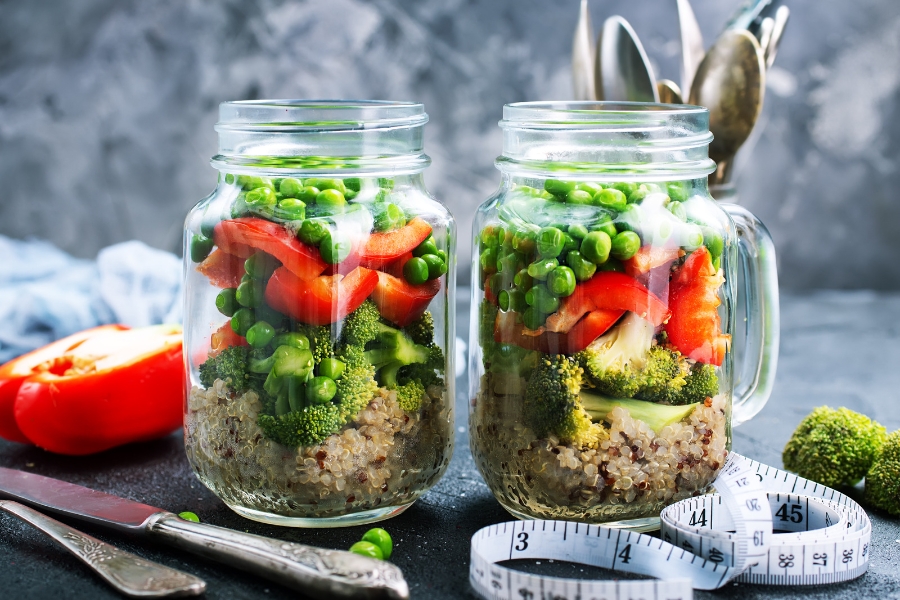
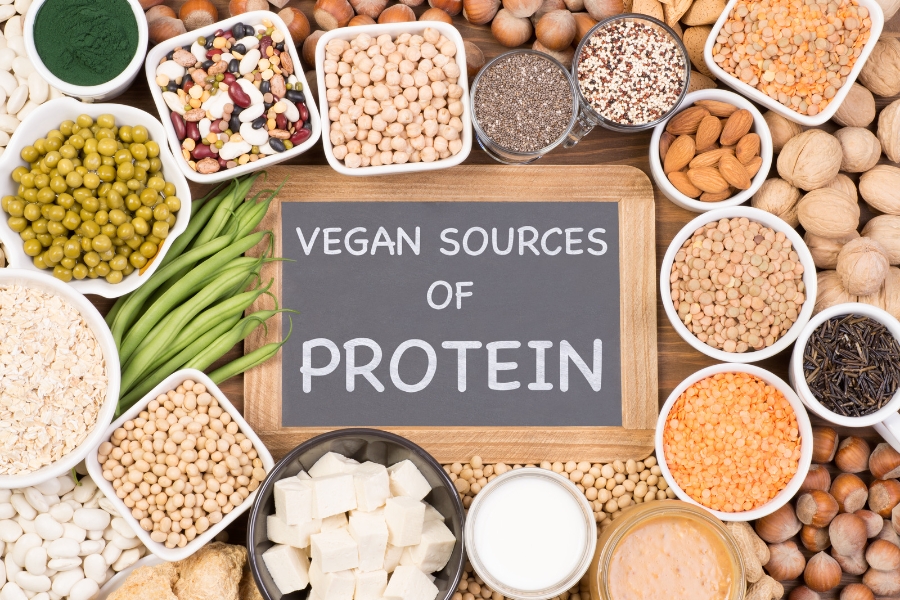

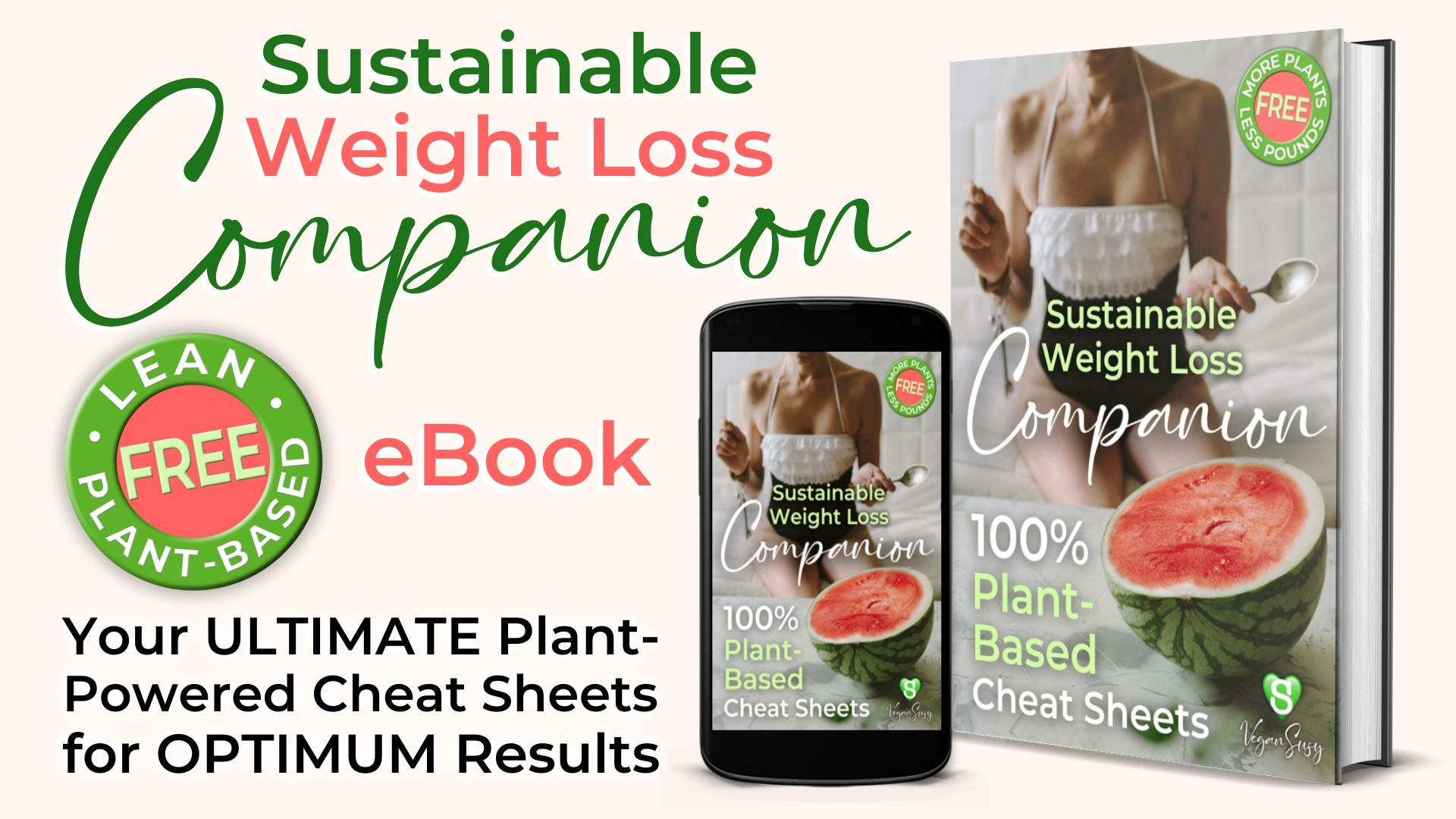





Facebook
Instagram
Youtube
Pinterest